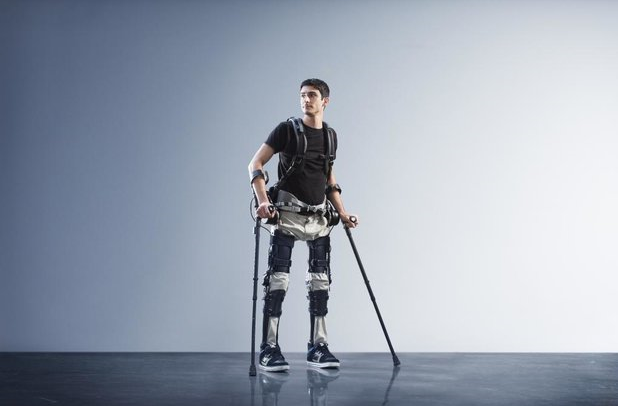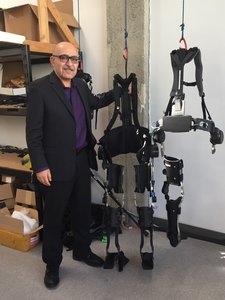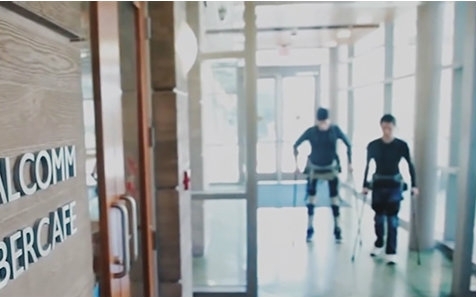New intellectual creations | Kazerooni, an exoskeleton excercise in the industry: “Excellence is simplicityâ€

In April of this year, the startup company SuitX, which sprouted at the University of California, Berkeley, released a lightweight, modular exoskeleton called Phoenix, which is designed to help rehabilitators and people with reduced mobility to stand and walk again. SuitX's founder, Homayoon Kazerooni, claimed that he had spent more than 10 years to build this product - as early as 2005, he has been working with Ekso Bionics, the leader of the current exoskeleton product market, to create this product. In addition, Kazerooni is also very confident that Phoenix is ​​the highest-end product built by SuitX to date.
Everyone may find it strange that SuitX is awkward? Where is Homayoon Kazerooni? Tong Xiaoying, a small editor of the same people who eat melons, quickly found himself in urine. After earning a master's degree in mechanical engineering from Madison University in Wisconsin in 1980, Kazerooni entered the Massachusetts Institute of Technology to pursue a second master of science degree. During his master's degree, he studied areas such as control systems, dynamics and vibrations, and design. He was simply an upper-student hegemony. After graduating from master's degree, he continued to study at MIT. The scope of research included man-machine systems and robotics. . The most embarrassing thing was that he took a Ph.D. in just three years and then continued to hang on. He taught at the School of Mechanical Engineering at the University of California, Berkeley, and became the Robotics and Ergonomics Lab at the University of California, Berkeley. Leaders (because of Kazerooni's outstanding contributions, everyone later kindly called the lab "KAZ LAB").
In the early stages of Kazerooni's teaching career, he received ASME Investigator Award, Discover Magazine's Technological Innovation Award and McKnight-Land Grant Professorship and many other awards; at the same time, his research results have also been named the most innovative of the year by Times Magazine of New York. The invention of significance; In addition, he also served as the core editor of the two major periodicals ASME Journal of Dynamics Systems and Control and IEEE Transaction on Mechatronics. However, from the post-teaching Kazerooni did not "pacify" this, he is still eager to promote the cutting-edge technology of the academic community to the industry, to make a real contribution to the human society. Therefore, he led a research team and focused on developing the basic science and engineering principles of robotics, control science, exoskeletons, and bioengineering to help those who lost their ability to walk and get them to stand up again.

In spite of the expectations, in 2011, the research results of the research room helped a paraplegic student named Austin Whitney of Berkeley, Calif., to regain his ability to walk and make appearances at the graduation ceremony. Kazerooni then launched a project called AUSTIN, which aims to develop a low-cost exoskeleton system that can help people who cannot walk properly regain their ability to walk independently. Later, Kazerooni founded Ekso Bionics to bring advanced exoskeleton technology to the market for the benefit of paraplegic patients. However, it is little known that before studying the exoskeleton of the lower extremities, Kazerroni led his team to successfully develop a robotic system that can enhance human upper limb capabilities. At present, this research result is widely used in the placement and movement of large cargoes in factories and distribution centers worldwide. Other high-tech products developed by the laboratory have also come out one after another and have received enthusiastic responses from all walks of life. In addition, Kazerooni has also worked with NASA to study human behavior in a virtual environment with tactile and visual coordination. His areas of interest also include bionic design, haptics, nonlinear control systems, implant systems, network control systems, power regeneration, unitary propellants, and portable energy production for mobile platforms.
At this point, Kazerooni's life has not ended yet. He received technical support from the Robotics and Ergonomics Laboratory at the University of California, Berkeley. Kaxton's own company, SuitX, also brought its own aura. Kazerooni, who pursues an engineering philosophy of excellence and simplicity, wants to make everything easier, so all SuitX members prefer the ultimate simple style and simple model. "If you create something, but it's not easy to use, then you need to work hard and add something to the original."

Under the fiercely competitive market environment, from the simple design idea, SuitX has created Phoenix with a cost price of US$30,000 and a weight of 12 kilograms. This is similar to the product launched by their biggest rival, ReWalk, which costs US$70,000 and weighs 22.7 kilograms. In comparison, the advantages are still very obvious. However, ReWalk is also working hard to reduce the weight of the product while increasing product functionality. However, Xiao Bian believes that under the leadership of Kazerooni, one day, SuitX will come up with big news.
Kazerooni, who has more than 30 years of experience in the mechanical engineering field, has published more than 200 papers, and has held more than 100 lectures in the United States and even around the world, and obtained many patents and awards. As an authority in the field of robotics, his exposure rate is high. Well, Xiao Bian said that it has become Kazerooni's sister and waited for the professor to come to the Great Sky.
Usb 3.0 Front Panel Usb Cable,Usb 3.0 Front Usb Panel Cable,Computer Case Usb Front Panel Usb Cable
Dongguan Bofan technology Co., LTD , https://www.pengliandz.com